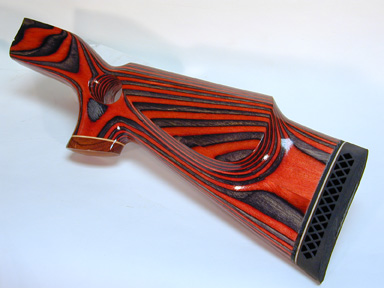
There are some woods — generally described as “exotic” — that are so oily by nature that the oil finish may dry very slowly, or even not at all. Such woods are rarely used as a stock-wood but sometimes appear as forearm tips etc., and as such, as long as the natural oil remains, require no actual protection. Such woods usually take a good polish when buffed. If also porous, perhaps a little hard wax (such as an automobile wax) is a good thought. Any Lin-Speed Oil that has not dried promptly on such woods can be rubbed away with the fingers or a coarse cloth. Any unsatisfactory dry of Lin-Speed, in less than 24 hours, can be considered affected by some adverse condition, no matter where applied. Most exotic woods dry out in a year or so and can be oiI-finished then, perhaps as part of a periodic maintenance application.
| Wood | Characteristics |
| Bubinga | High density, closed pores, and natural oils can cause problems with Lin-Speed Oil penetration |
| Cocobolo | Very high oil content and high density. |
| Cumaru | High oil content and high density. |
| East Indian Rosewood | High oil content and medium/high density. |
| Ebonies | Some oil present, along with very high densities. |
| Goncalo Alves | High density and natural oils prevent water absorption. |
| Greenheart | High density and natural oils. |
| Honduran Rosewood | High oil content and high density. |
| Katalox | Very high density, along with natural oils. |
| Kingwood | Very high oil content and high density. |
| Lignum Vitae | Extremely high oil content and density pose penetration challenges. |
| Osage Orange | Oils present can give problems. |
| Purpleheart | High oil content and high density. |
| Rosewoods | Typically very oily and very dense. |
| Santos Mahogany | High density and moderately oily. |
| Teak | Oils/resins can present challenges in outdoor applications. |
| Verawood | Extremely high oil content and density can pose challenges. |
